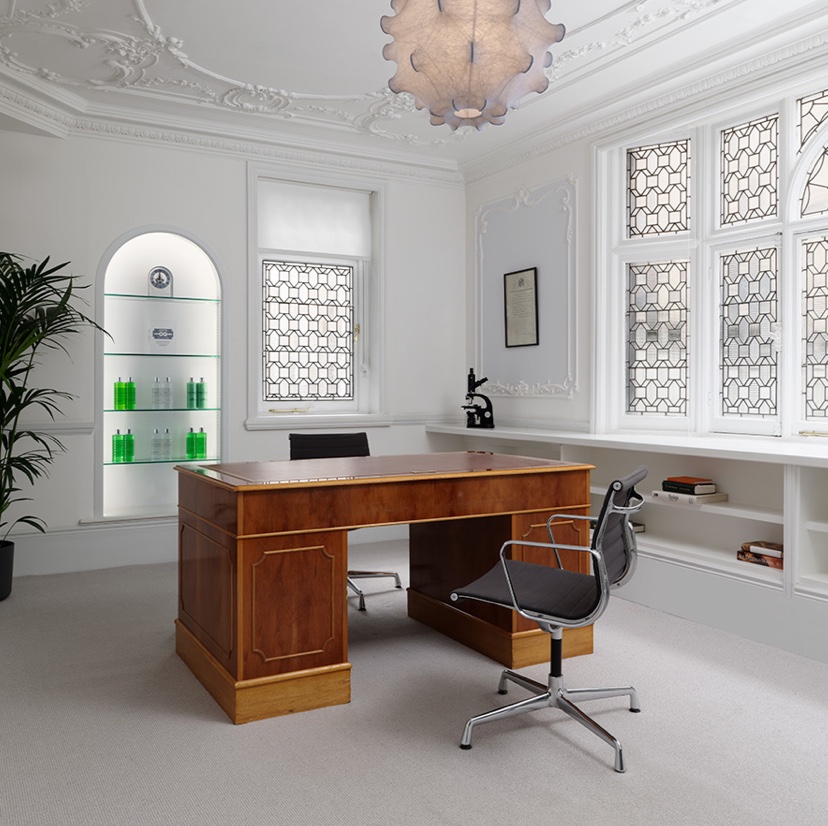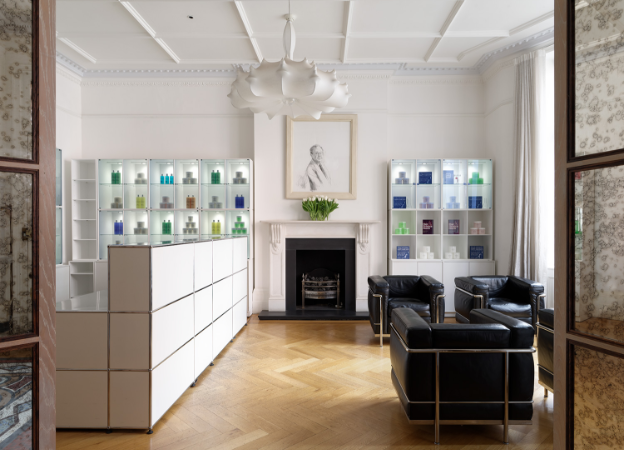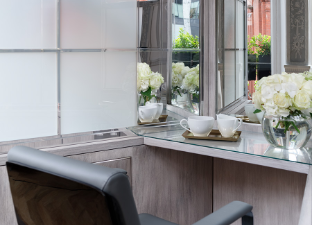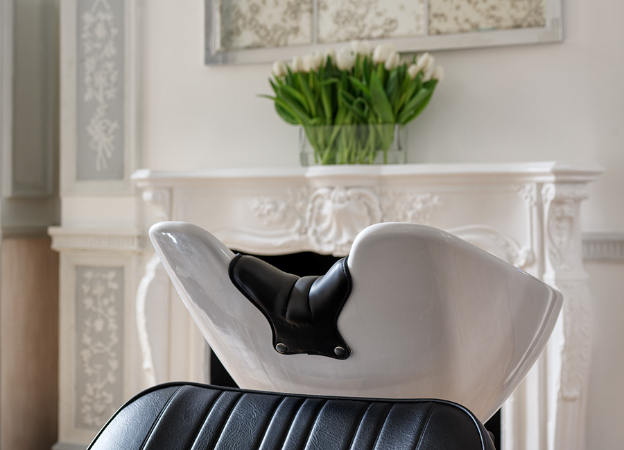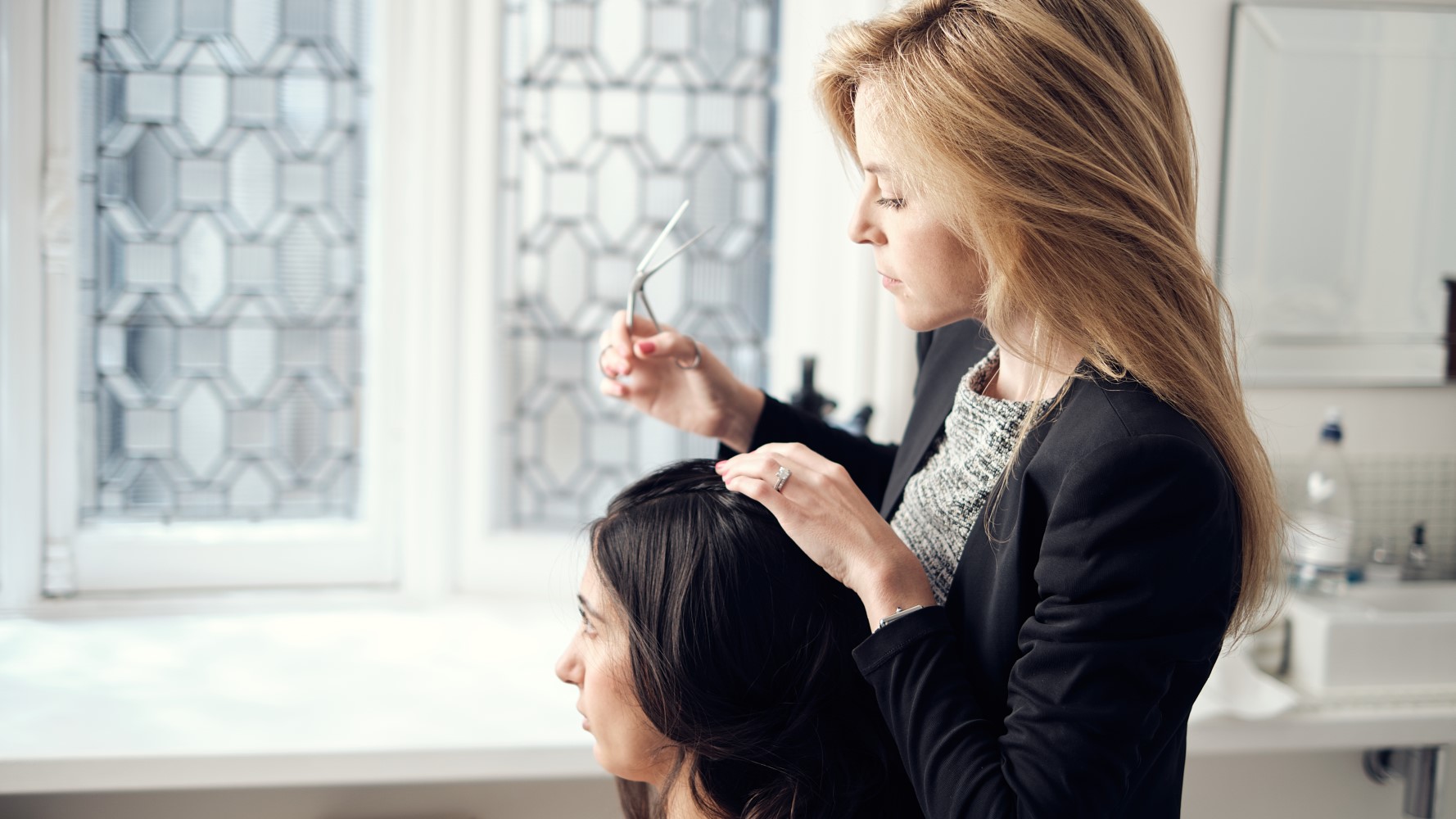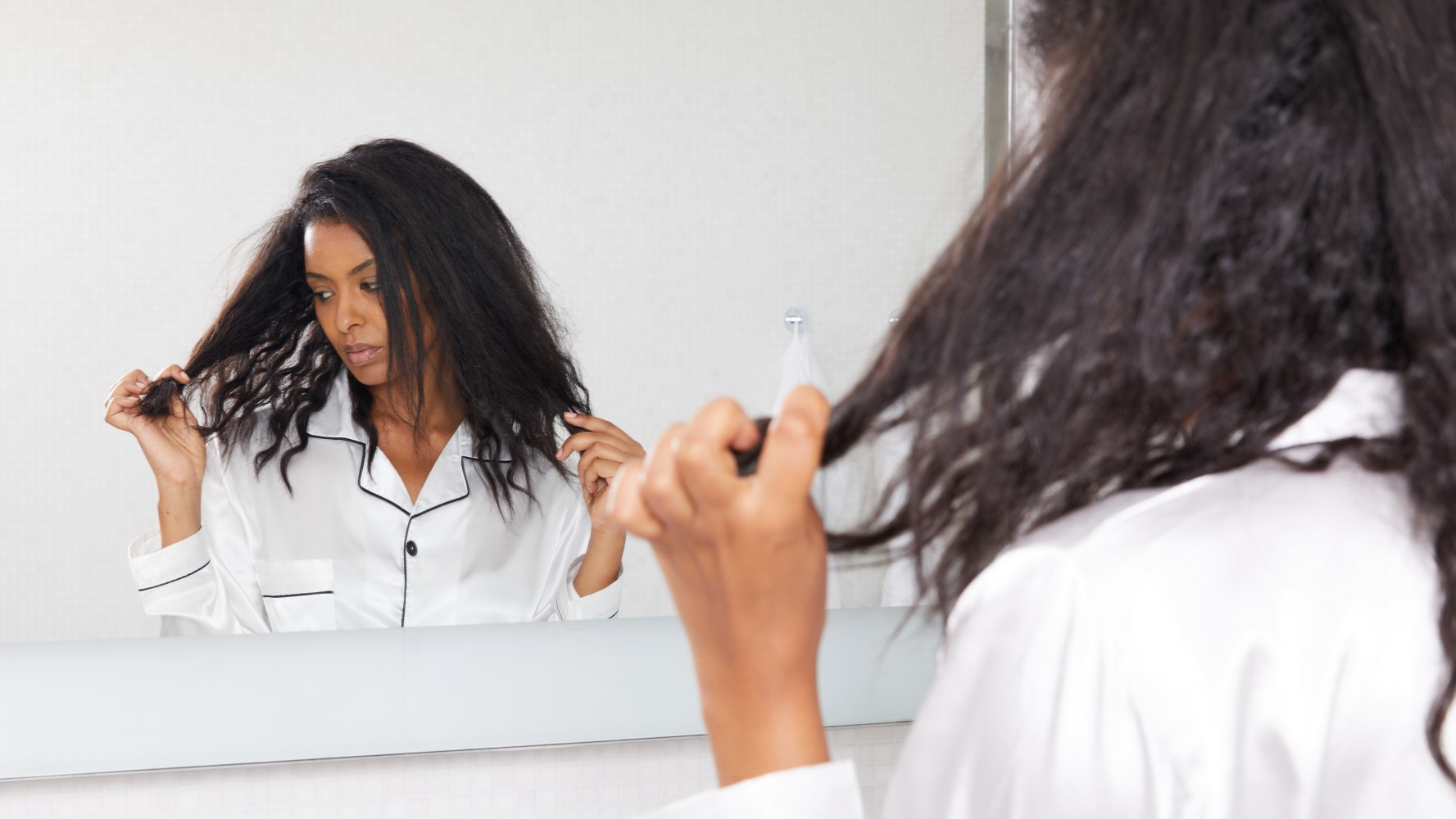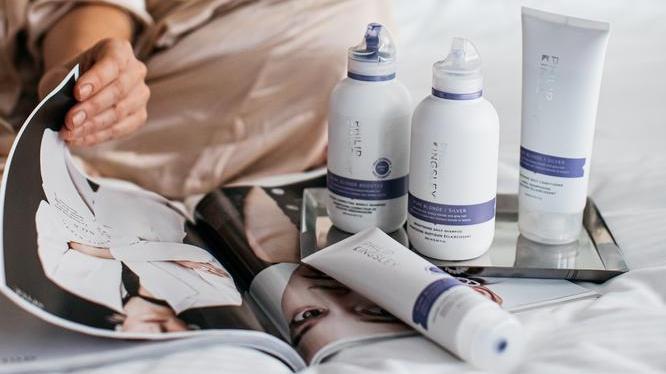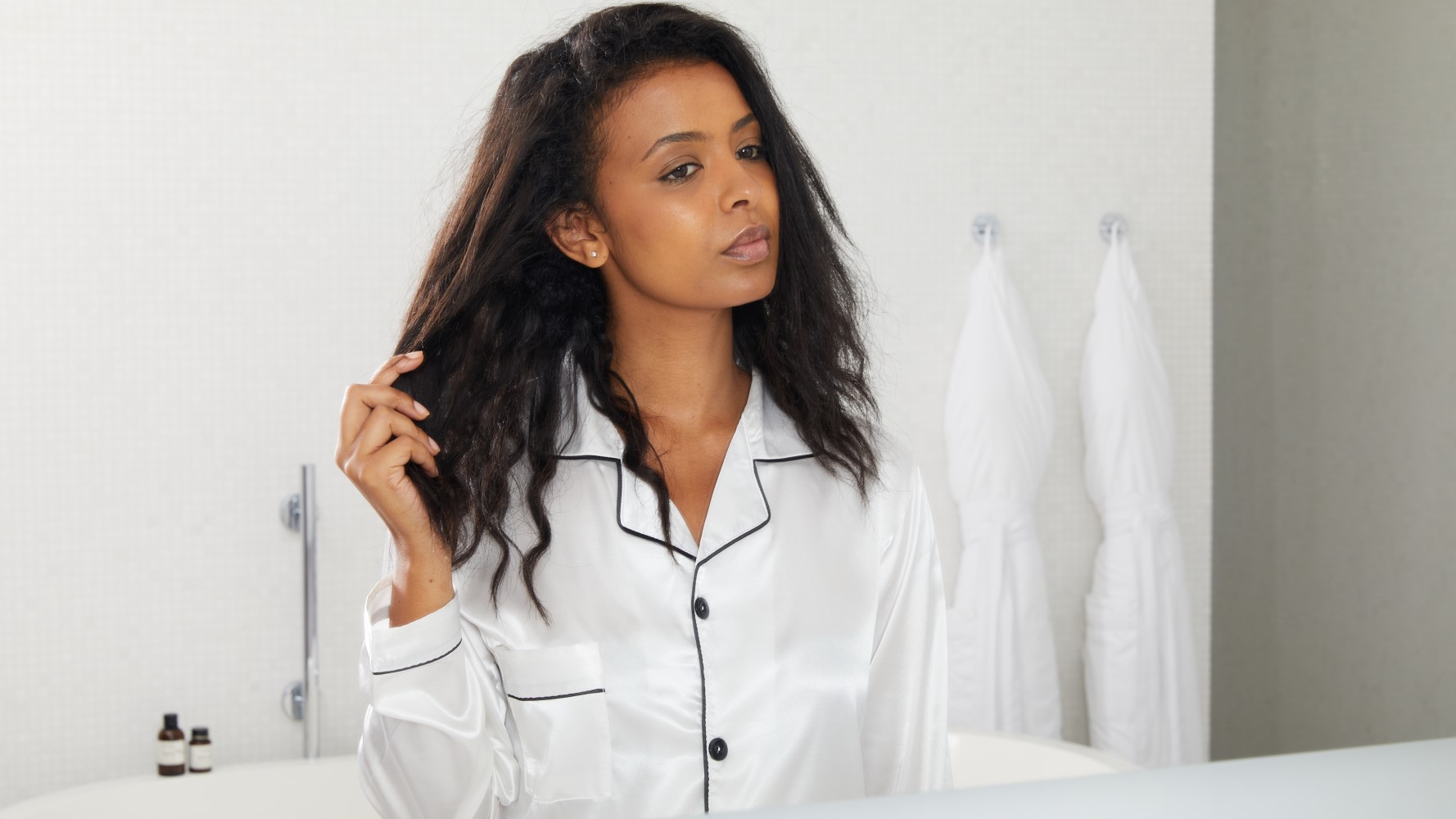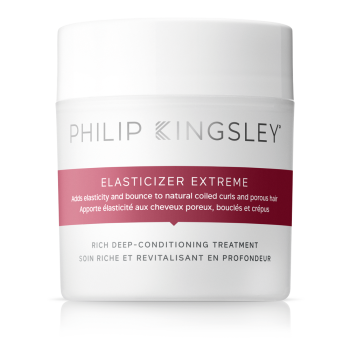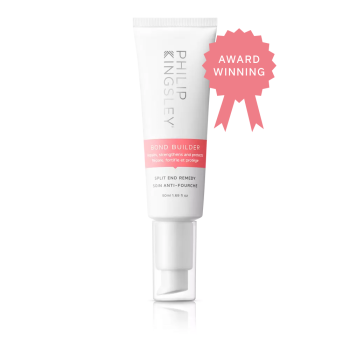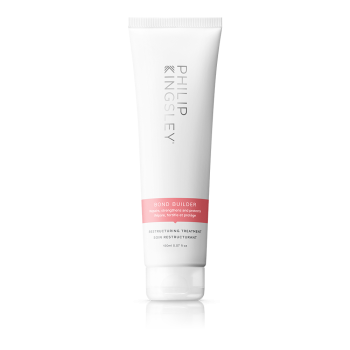How does chemically straightening damage your hair? And what about the benefits? Find out in our guide below...
What is hair relaxing?
Hair relaxing is a form of permanent chemical straightening.
How does chemical straightening work?
There are three types of chemical bonds in the hair: hydrogen, disulphide and salt bonds. Salt bonds are broken very easily by changes in pH. Hydrogen bonds are broken when hair becomes wet (and reformed when it dries), while disulphide bonds are extremely durable and broken by chemical straightening, perming and heat. In fact, they are one of the strongest naturally occurring bonds in the world.
Chemical relaxers use extremely high heat and chemicals to break disulphide bonds. Your stylist can then reset your hair into a permanently straight configuration. The chemicals most commonly used in relaxers include sodium hydroxide, ammonium thioglycolate, and sodium thioglycolate.
How long does chemically straightened hair last?
Unlike Keratin treatments — which are temporary and wash out after about three months — chemical relaxers are permanent, and last until your hair grows out.
Are chemical relaxers harmful to your hair?
Chemically straightening your hair can be extremely satisfying, and we know how important it is to feel happy and confident with your style. However, we urge you to be careful if you decide to have your hair relaxed. This is because the high heat and strong chemicals used in relaxers risk making your hair dry, brittle and prone to breakage.
How does chemical straightening damage your hair?
If your hair is in good condition and has never been previously relaxed, you are likely to be fine. However, if your hair is already delicate (for example, if you have natural tightly coiled curls, or heavily bleached hair), chemical relaxers can seriously damage your strands.
If left on too long, chemical straighteners can cause mass hair breakage. This is because chemical processes can cause the bonds inside the hair to weaken and break, and when the internal structure of the hair is compromised, strands are more prone to snapping and splitting. To repair the damage caused, we recommend regularly using Bond Builder Restructuring Treatment, our restorative pre-shampoo mask specially formulated for damaged hair. Working beneath the surface to reconnect and intensely repair bonds broken by chemical straightening, it leaves strands 3x more resistant to damage and up to 49% stronger*. Packed with Advanced Bond Rebuilding Technology, the strengthening formula also works to shield bonds against future damage, helping to restore hair health for reduced breakage. Use at least once a week for best results.
*Mean increase 2.79x after 5 treatments compared to a single treatment - independent instrumental test results / ^After 5 treatments compared to a single treatment – independent instrumental test results / **Independent user trial – after 4 washes
Furthermore, the act of straightening your hair out during the processing can sometimes overstretch the hair shafts, leaving insufficient elasticity for your hair to withstand normal everyday styling procedures, such as brushing and blow-drying. To replace that lost moisture, it's imperative to use deeply-conditioning treatments that inject hydration back into the hair shaft to keep it nourished and healthy — like our supercharged Elasticizer Extreme Rich Deep-Conditioning Treatment. Replacing lost moisture and lipids to provide instant nourishment to dry, fragile strands, the intensely thirst-quenching formula leaves your hair full of elasticity and stretch, and in turn strength. Use at least once per week and alternate with Bond Builder Restructuring Treatment for optimal results.
It can be difficult to stop relaxing your hair once you start. This is because relaxers are permanent, so your style will appear inconsistent once your natural texture starts to grow back in. However, overlapping already relaxed hair with new chemicals can cause your hair to break. We recommend you do not have your hair relaxed more than once every three to four months.
The chemicals used in relaxing treatments are very strong and are applied near to your scalp. If the treatment is performed incorrectly, there is a risk of chemical burns on your scalp, and this can result in infection, scarring and permanent hair loss. Be sure to choose your stylist carefully.
What are the benefits of hair relaxing?
On the other hand, for people with hair that is difficult to manage, or who are unhappy with having curly or frizzy hair, chemical straightening is an extremely attractive option. It can provide an instant morale boost and make your daily styling routine a great deal easier.
Relaxing may even, in some ways, be beneficial to your hair’s condition. Once your hair is straightened, none of the other harmful procedures (like hot oil, pressing, pulling, flat irons and hot combs) are needed. Also, because it is much easier to style relaxed hair, you will hopefully be prepared to wash it more frequently — and frequent washing is highly beneficial to hair and scalp health!
How do you look after relaxed hair?
Chemical straightening leaves your strands more vulnerable to damage and breakage. We recommend the following steps to help keep your hair as strong and healthy as possible, both before and after the process:
- Use regular intensive conditioning treatments, such as our award-winning Elasticizer Extreme, to restore moisture to your hair and Bond Builder Restructuring Treatment to strengthen and reconnect broken bonds caused by chemical processing. Aim to deeply condition your hair twice a week for two weeks prior to relaxing, and then once a week thereafter, alternating between these two pre-shampoo treatments to tackle dryness and damage for optimum hair health.
- If you are able to visit a Philip Kingsley Clinic in London or New York, come in for a deep-conditioning spa treatment from one of our expert Trichotherapists. Your Trichotherapist will be happy to give you advice on all aspects of caring for your particular hair type and condition.
How should I prepare for chemical straightening?
Relaxing previously unprocessed — or ‘virgin’ — hair rarely results in disaster. However, in our Trichological Clinics we have seen many cases where straightening previously relaxed or colour-treated hair results in extreme dryness and breakage. This is especially true of the ends of your hair. Be sure to shield your strands with a thermal protective treatment before the straightening solution is applied.
When should chemical processing be avoided?
Avoid relaxing treatments if the skin on your scalp is inflamed or broken.
What should I do if my scalp becomes irritated after chemically processing my hair?
If your scalp becomes inflamed or irritated after straightening, apply a solution of cold milk and water in equal parts. This should help soothe it. If the irritation continues, you should consult a Trichologist or dermatologist.
If you would like to find out more about caring for relaxed hair, our Clinics in London and New York specialise in all aspects of hair and scalp health, and will be delighted to welcome you.
Clinic Consultations
To find out more about how you can maximise your hair health, come and see us at one of our Clinics where we will be delighted to welcome you.
